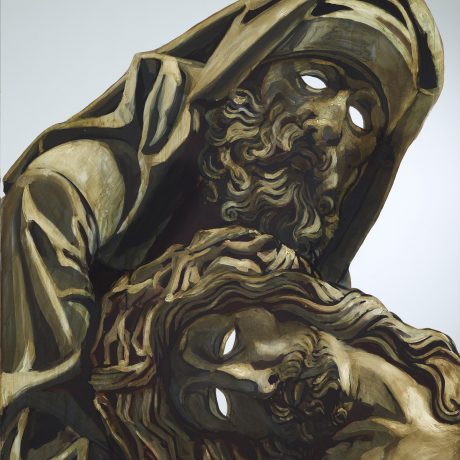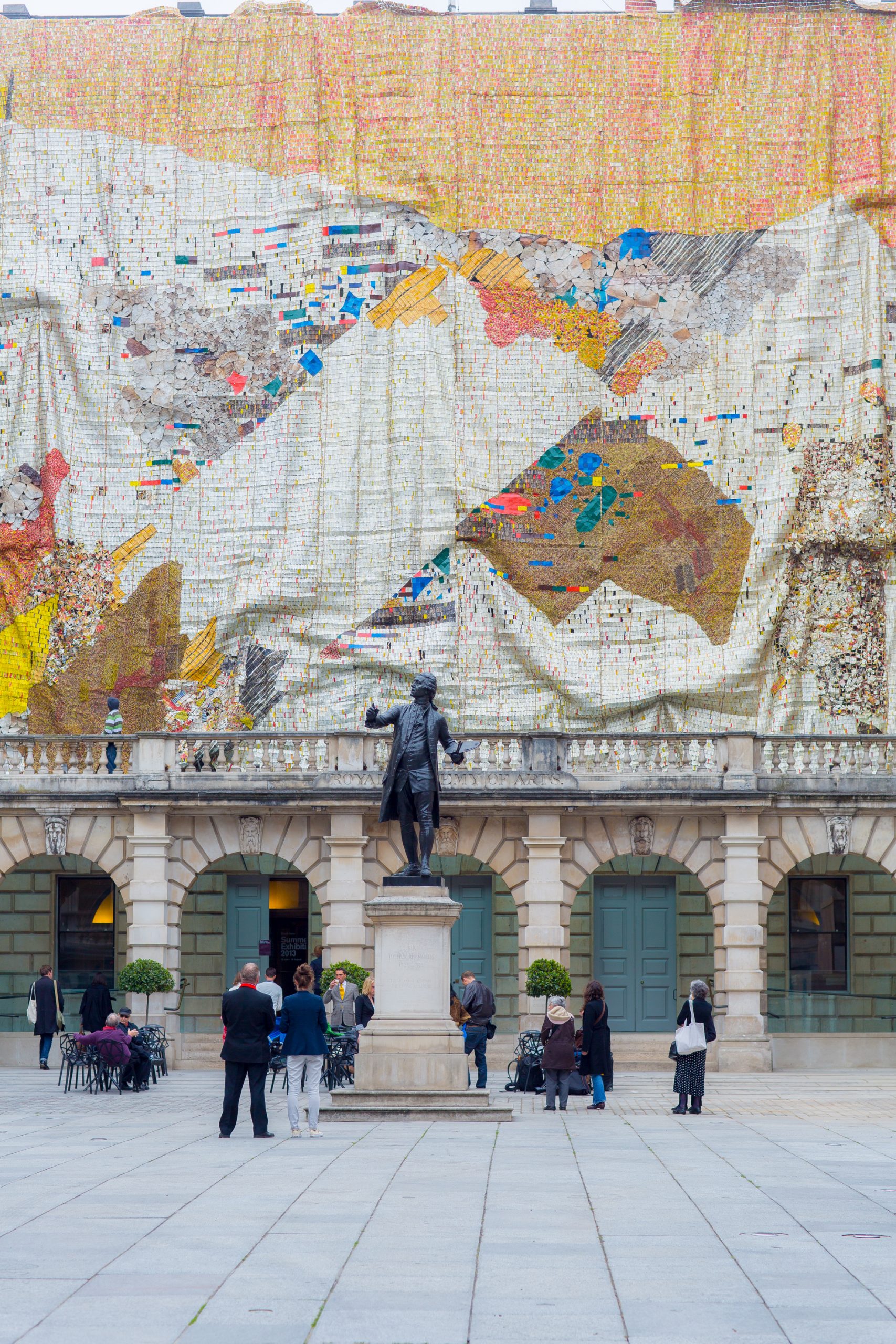
Under the Influence invites artists to discuss a work that has had a profound impact on their practice. In this edition, multimedia artist Victoria-Idongesit Udondian discusses how El Anatsui shaped her understanding of sculpture and the possibilities of discarded materials.
One of the things that fascinates me about El Anatsui is how he brings so much value to his materials, and the way that he pays attention to his environment. When I was an art student at the University of Uyo (I majored in painting for my first degree), I had to take the night bus about 450 miles to Lagos just to buy oil colours. I had to stock up for the whole year, because that was what the course demanded. Meanwhile, Anatsui was showing us how we could rethink art, rethink materiality, rethink access, and even rethink what the terms ‘painting’ and ‘sculpture’ really mean.
These ideas had a huge impact on me as a young artist. I came across his older sculptures made from reclaimed wood, which he carved into new iconographies, at a time when I was discovering that I didn’t find myself within the art history that I was being taught. I began to ask, “Do I have to struggle to find materials to make my art, or could I look at my environment, and figure out the material that is abundant to me, that I could reuse to make work?”
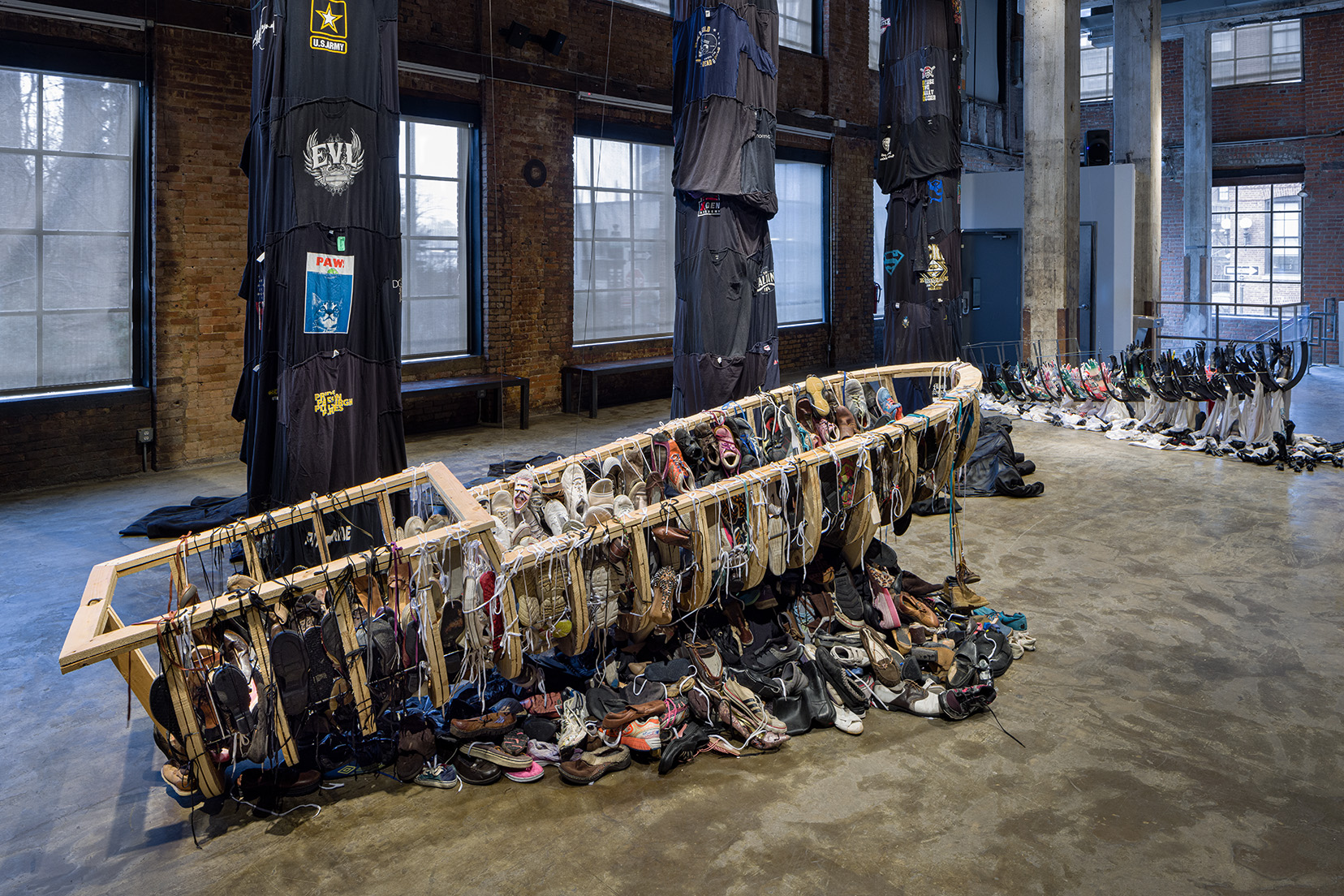
Around 2007 I was figuring out a new direction in my practice, moving away from these cubist style paintings, and was so inspired by everything I read about Anatsui. It was a full-circle moment for him as he was rethinking his materials. He shifted the idea of what sculpture could be, from something static and three-dimensional, into something more malleable, layered and fluid, which eventually resulted in his winning the Golden Lion at the 2015 Venice Biennale.
While Anatsui uses bottle caps and other recycled metals to create his sculptural tapestries, I work with a lot of second-hand clothing. Textiles came to me naturally, because my very first training was in tailoring and fashion design. I’m thinking about the qualities and historicity of these discarded materials, the lifecycle of a garment and how they travel from the West to the global South, and how colonial histories are complicated by the local context of Nigeria.
“While Anatsui uses bottle caps and other recycled metals, I work with a lot of second-hand clothing”
I reuse this clothing to recreate what I call hybrid costumes, with some of them referencing the regalia of 19th-century colonial power houses. I am examining their function as sculpture, or their role within photography or performance, but also how the textile itself brings along its own history. I see a connection to Anatsui’s approach of repurposing, of giving scrap new life.
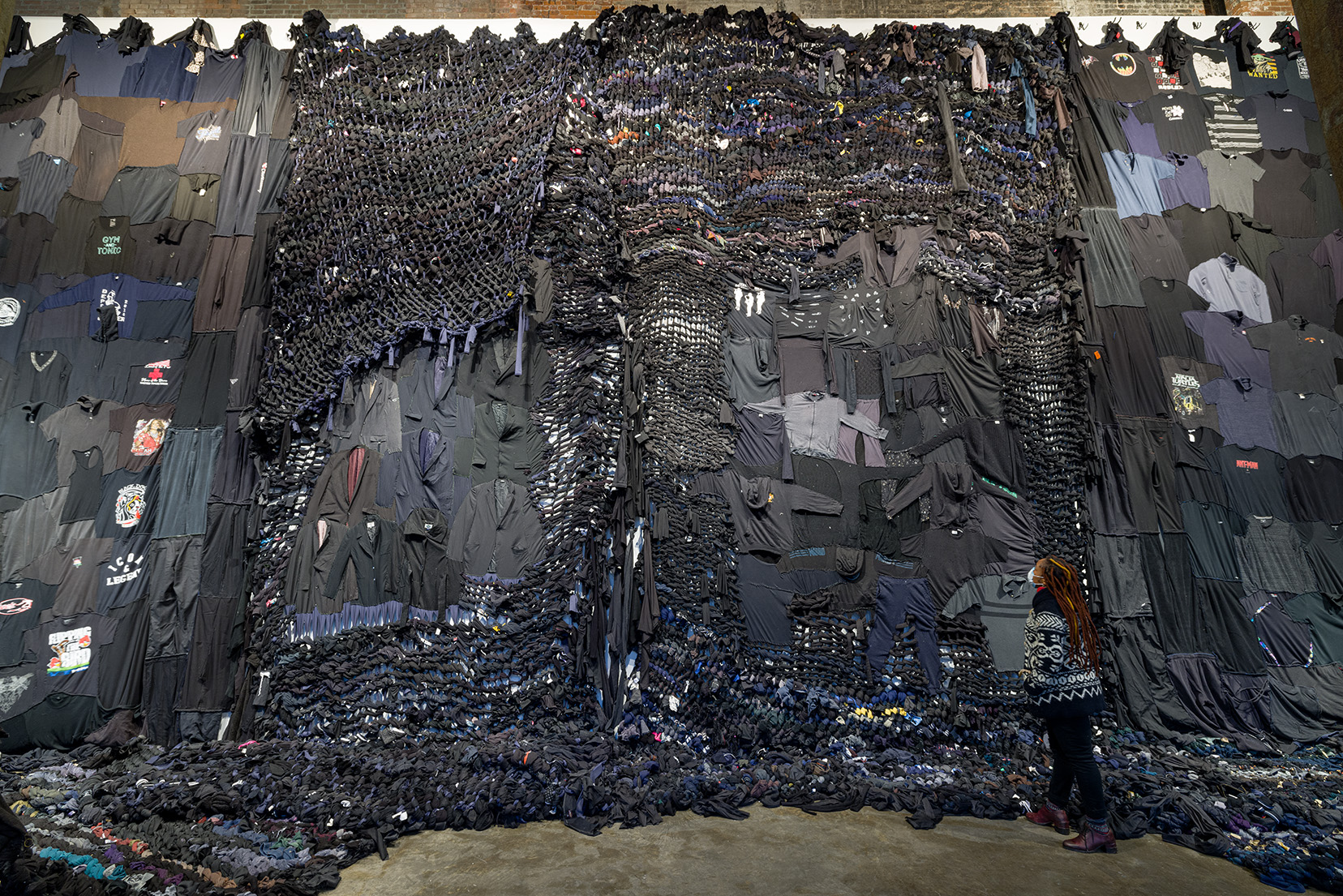
It has been interesting to see Anatsui’s work within a Western context and realising how the best of African art ends up in Europe. Most Nigerians barely have access to his work. Even though I’ve seen some pieces up for auction in Lagos, most of his monumental sculptures have been shown elsewhere. I have been privileged enough to see his work across Europe and in the US, much more often than in Lagos or Uyo.
“I often introduce his work to my students at the University at Buffalo, and nobody ever guesses what the pieces are made from”
Seeing these bottle caps collected from Nigerian breweries in a completely different place brings up interesting questions around commerce and how goods move from one country to another, topics I am always considering in my practice. I might see a cap that is from the Champion Brewery in Uyo, which has made its way to Anatsui’s studio in the east of the country, and then all the way to a gallery in New York.
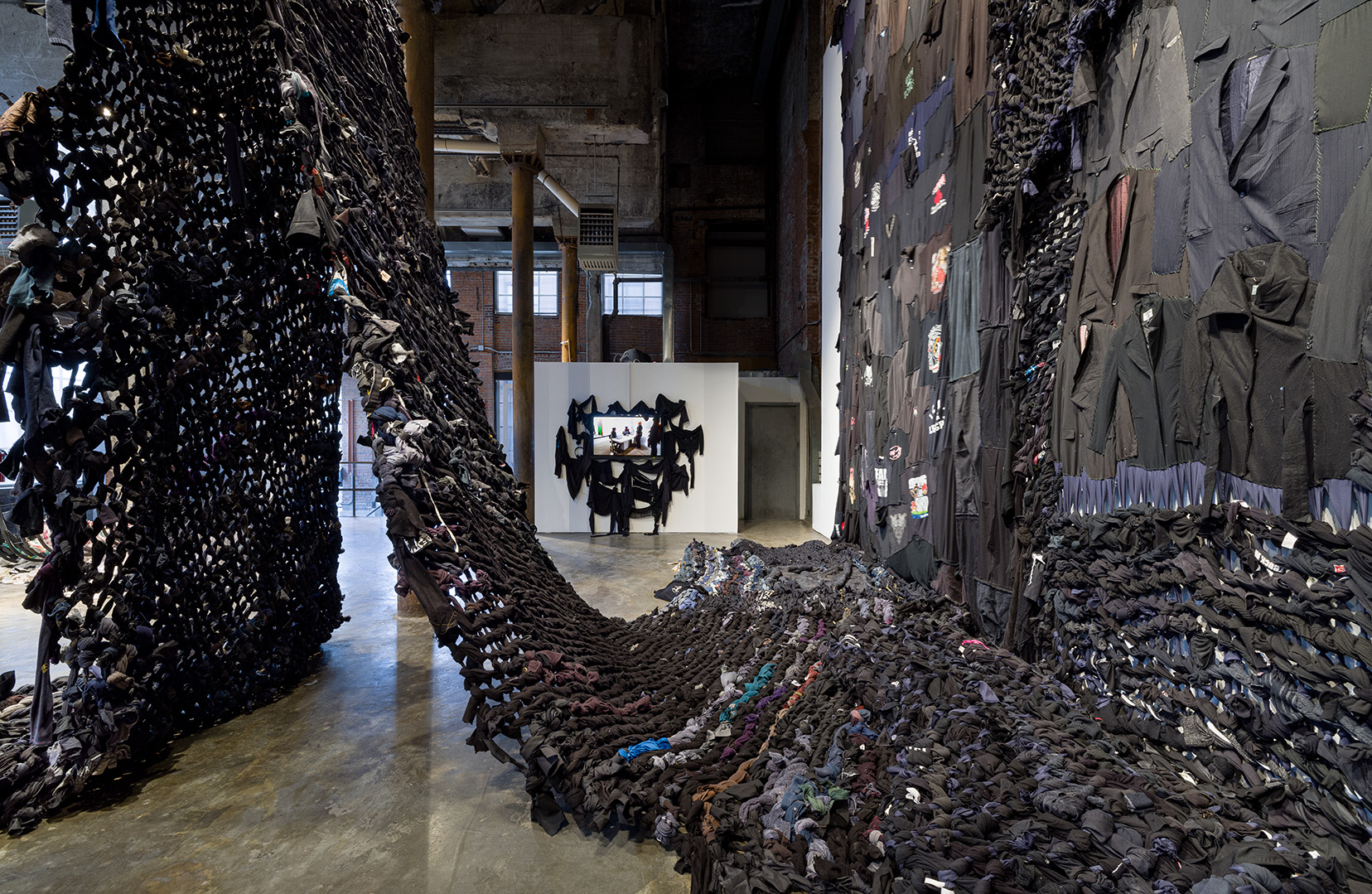
It is also important to remember that Anatsui’s sculptures are very beautiful. The found material becomes something totally new. I often introduce his work to my students at the University at Buffalo, and nobody ever guesses what the pieces are made from. It makes sense, because when you think of the size of a bottle cap, and the monumental proportions of Anatsui’s work, it is quite mind blowing. He also taught me that patience is golden when it comes to process. Things cannot be rushed.
As told to Holly Black, Elephant’s managing editor
Victoria-Idongesit Udondian, How Can I Be Nobody, ran at Smack Mellon Gallery, New York City in Spring 2022
Under the Influence
Discover the connections between today’s creatives and the artists who helped shape their work
READ MORE